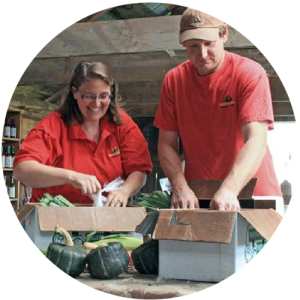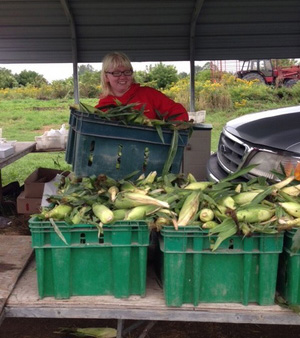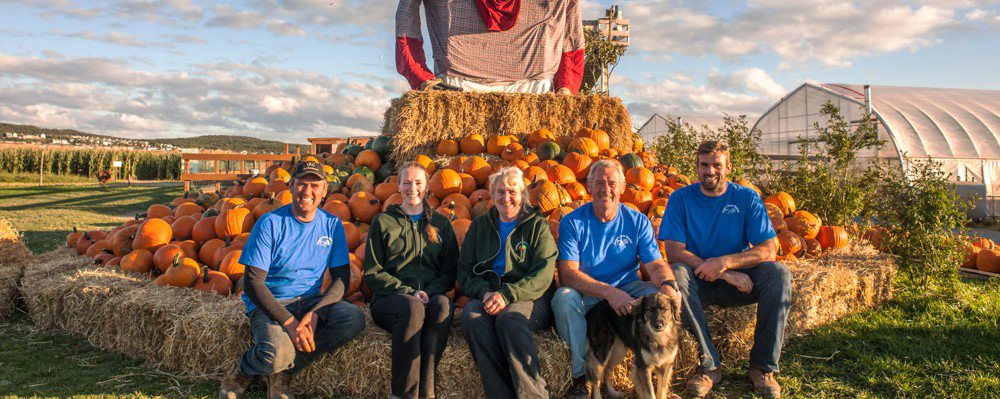Photo Above: Lester’s Farm Market, Newfoundland
I am guilty of wondering if the grass is greener elsewhere. Having worked for many years to connect students with local growers in Vancouver’s urban setting, I have often mulled over our successes and challenges. I have read of initiatives elsewhere with twinges of envy, despite knowing others do the same when they hear of Vancouver’s successes.
BC has achieved incredibly strong educational and community engagement outcomes through Farm to School, and yet continues to struggle to have a significant impact on procurement practices or on farmers’ profits. Procurement successes in Ontario and New Brunswick made me wonder about the factors that led to those successes. Were larger sized farms required? Or a larger local population base? Were provincial ‘buy local’ policies the key? And of course coming from Vancouver, surely the cost of land was our biggest excuse?
With most of my farm to institution knowledge based on small scale farms, I reached out to three well-established mid-sized farmers for their take on sales to hospitals, schools and other institutions. I knew there were varying opinions among farmers about these local markets. I had heard some farmers say institutional sales were rewarding and from others that it wasn’t worth the effort. Family farmers Larry Cohn, Susan Lester, and Lisa Cooper shared how institutional sales fit into their business models in Ontario and Newfoundland.

Larry Cohn runs a 750 acre farm in Bradford Ontario. As a city girl, I have no sense of scale of 750 acres, other than knowing that’s twice the size of the average farm in BC. Cohn Farms grows root crops, and focuses mostly on potatoes. Their scale allows them to sell into a market that demands volume much more easily than many BC farms. Beyond their size advantage though, their business savvy led them to aggregate product with other farmers, process their crops into value added products like diced potatoes, and also to ensure they met customer demand year-round.
As Larry says, “We look after 52 weeks of the year. It’s the only way to be successful. What would your customer do the rest of the time?”
The institutional market has been part of the Cohn Farm’s business model even when Larry’s dad was running the business. However Larry credits Ontario’s Greenbelt Fund with a doubling of their institutional sales since 2010. The Greenbelt fund connects buyers and producers. Call it a dating service where 50-100 growers, distributors, and health care purchasers meet twice a year. Relationships are built, follow up conversations are booked, and deals are brokered.
There is a different set of logistics for mid-sized farmers who have fewer options for crop aggregation or processing and no relationship-brokering agency. St. John’s Newfoundland already faces a growing season with half of the number of frost free days as elsewhere in Canada. There is a declining number of farms and there is a long-standing expectation of sourcing most produce from off-island. For Lester’s 170 year old family farm to begin selling to just one school, a year and a half of legwork was required.

While hopeful that other schools will begin integrating local foods into their cafeterias, Susan Lester felt the main benefits of selling food to schools are from impacts on student health and awareness of local food and future farming opportunities, rather than from any impact on the profitability of their farm operations. For that reason, their business focus remains on sales through their own popular onsite market. This parallels what I see happening in much of BC.

My third conversation was with Lisa Cooper from Cooper’s CSA Farm located in Zephyr, an hour north of Toronto. They grow produce and raise cows, pigs and chickens for a year-round(!) CSA. The farm has sold their veggies to educational institutions in the past, but found that the institutions wanted a consistent size, shape and variety. In contrast, given their primary market is individual families, crops are chosen based on flavour.
“We grow our product to be the best tasting product we can. We don’t care if it’s a bit misshapen or odd. The flavour from that experience is way better than anything else you’re going to get, and that’s what our customers want,” says Lisa Cooper. Cooper’s Farm decided to stick with their CSA model rather than relying on more labour, more tractors, and more sprays to ensure a consistent looking product for institutions.

Some small institutions, such as high schools have bought Cooper’s CSA shares. Given that the farm already delivers to 40% of their 500 CSA members, delivering a share or two to schools doesn’t pose any additional hurdles. However, the logistical and economic difference between a school buying a few CSA shares versus ordering their true produce needs and changing to a seasonal and flexible menu is significant.
Funding formulas for institutional food are one key stumbling block for changing ingredient and menu offerings. Larry Cohn commends hospitals for what they can do with such limited funds – $7.30 for three meals and two snacks – and recognizes that with such limited funding, increasing hospital purchases of fresh food takes a lot of creative juggling.
Each of these farms has found their niche market, with only the largest of the three focused on institutional sales. Is it clear what it takes to get local ingredients featured on every hospital, school, and university menu? Not quite. The road forward is not a predictable line. However, a picture is emerging for me of entrepreneurial savvy and scale of operations, but also of key enabling elements like brokered relationships and adequate institutional funding.
Lisa Cooper also points out that a societal understanding of farming and local foods is helpful in valuing quality Canadian products. Perhaps that means that the strong educational and awareness outcomes emerging through current Farm to Cafeteria efforts are important contributions even if immediate procurement changes are not taking place. The move towards local institutional procurement seems at times to be a snail’s paced race, but at least the course is set and the race has begun.





